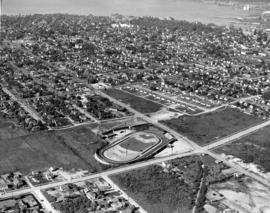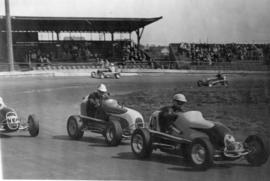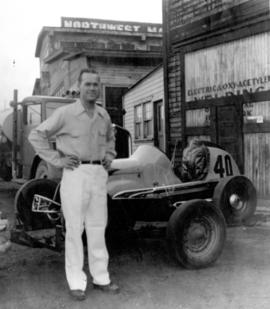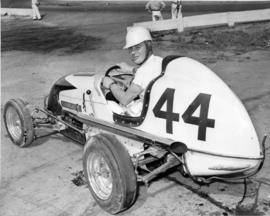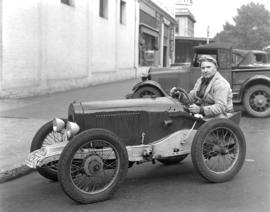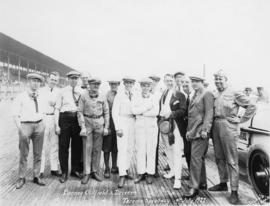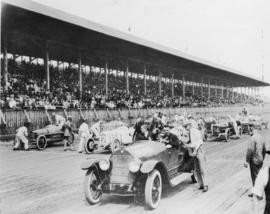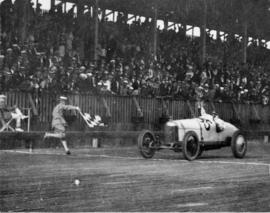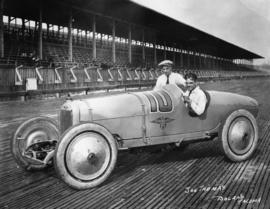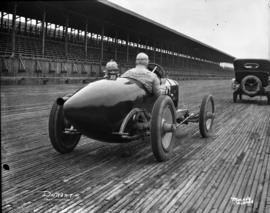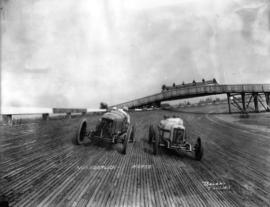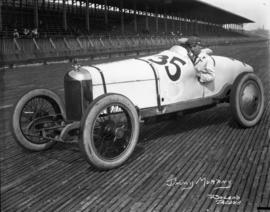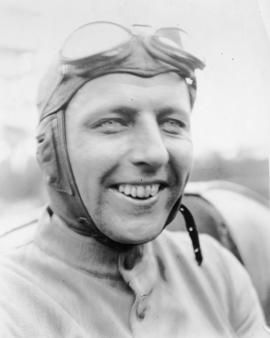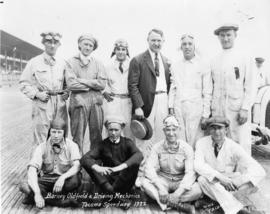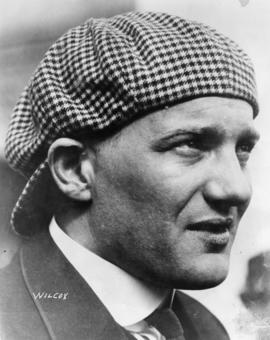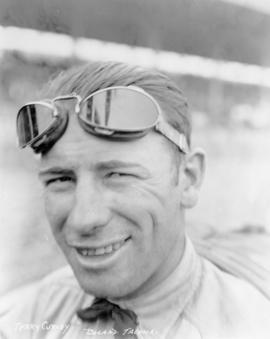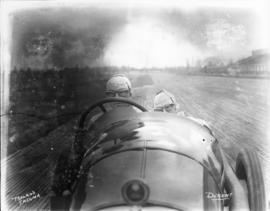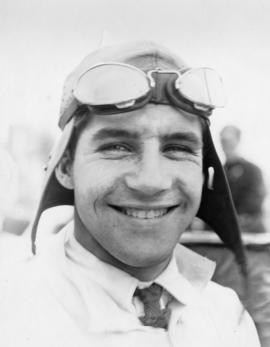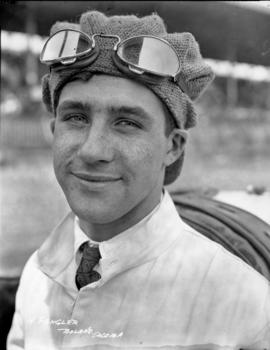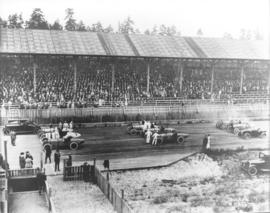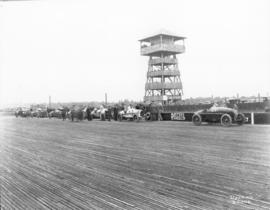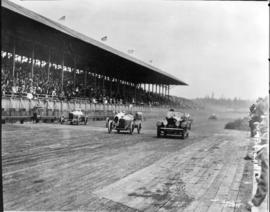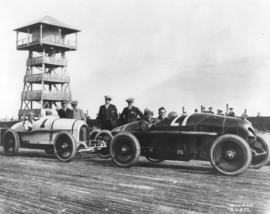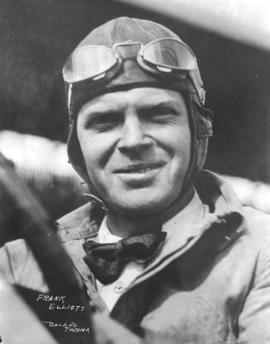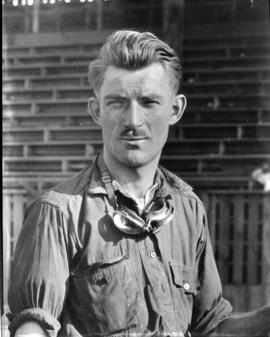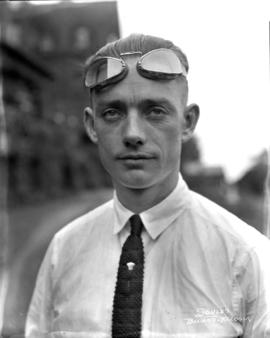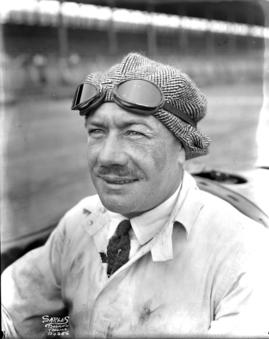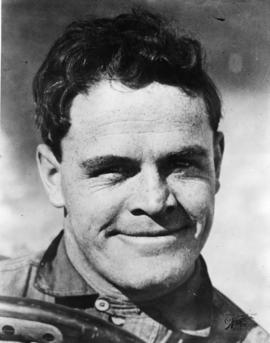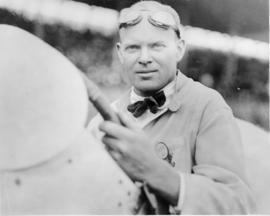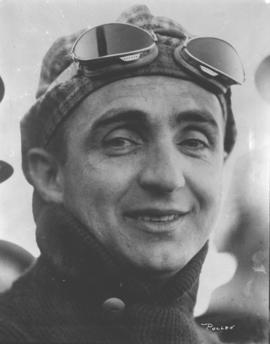In July of 1921, veteran driver Eddie Pullen was in danger of having to withdraw from the Tacoma Speedway Classic. He had lost his car at Indianapolis and had not found a replacement. Fellow driver Johnny Thiele, knowing what a favorite Pullen was in the Northwest, offered him his Duesenberg and withdrew from the race. Pullen was especially popular in Tacoma, where he had performed in his very first race. He had also already announced that he would be retiring from racing at the end of the year at the insistence of his wife. Born August 16,1883 in Trenton, N.J., Pullen had always been mechanically inclined. After he finished school, he went to work at a machine shop. He ended up, in 1909, working in Flint, Mich., at Buick. From there, he went to employment at Mercer. At that time, Mercer was focusing a lot of its energies on its sports car, the Mercer Raceabout, and its crack racing team, headed by Hughie Hughes. In 1911, Pullen was able to swing a job as mechanic with that team. Then came Tacoma in 1912, Ralph Mulford withdrew from the race and Pullen, still a mechanic, convinced Hughes to let him race. Pullen won first place in the 150 mile event and from then on was a driver; although he also served as head of the mechanical end of the Mercer team. In 1914, he became the first and only American born driver to ever win what was then the United State's most famous road race, the American Grand Prize, in an American car, the Mercer. (TDL 7/3/1921, pg. C-3; www.capitalcentury.com)
Tacoma Speedway (Lakewood); Racetracks--Lakewood--1920-1930; Automobile racing--Lakewood--1920-1930; Pullen, Eddie; Automobile racing drivers;
